The Azores
You are here: Home > The Azores
Most of us are familiar with the Azores by name but locating them on a map can be a little trickier.
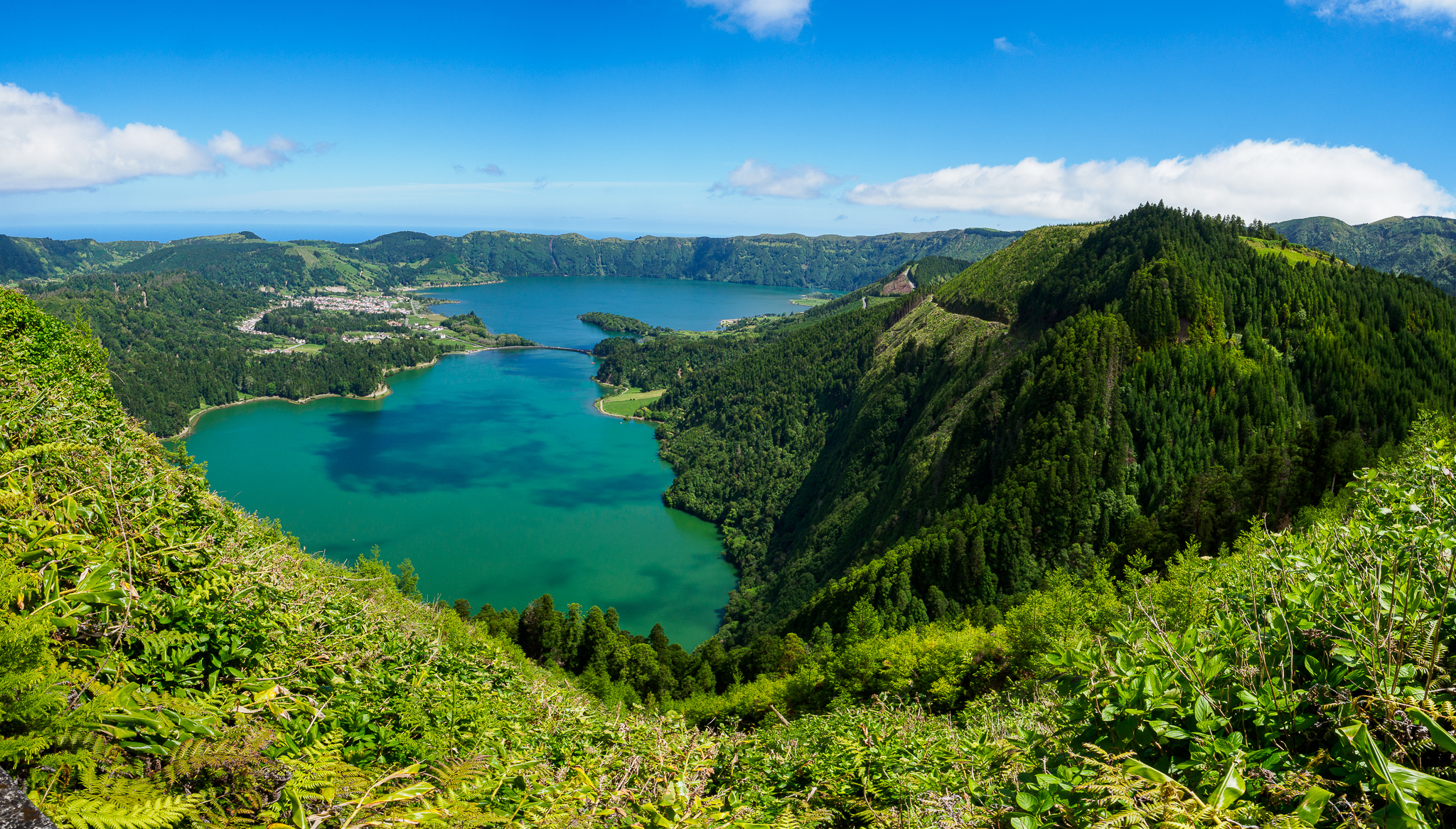 These unique islands lie 1500km off the coast of Portugal. Nine wonderfully diverse islands, each with their own merit. They’re very much part of Portugal; in their language, their historic architecture, their wonderful seasonal cuisine and in their warm and friendly welcome.
These unique islands lie 1500km off the coast of Portugal. Nine wonderfully diverse islands, each with their own merit. They’re very much part of Portugal; in their language, their historic architecture, their wonderful seasonal cuisine and in their warm and friendly welcome.
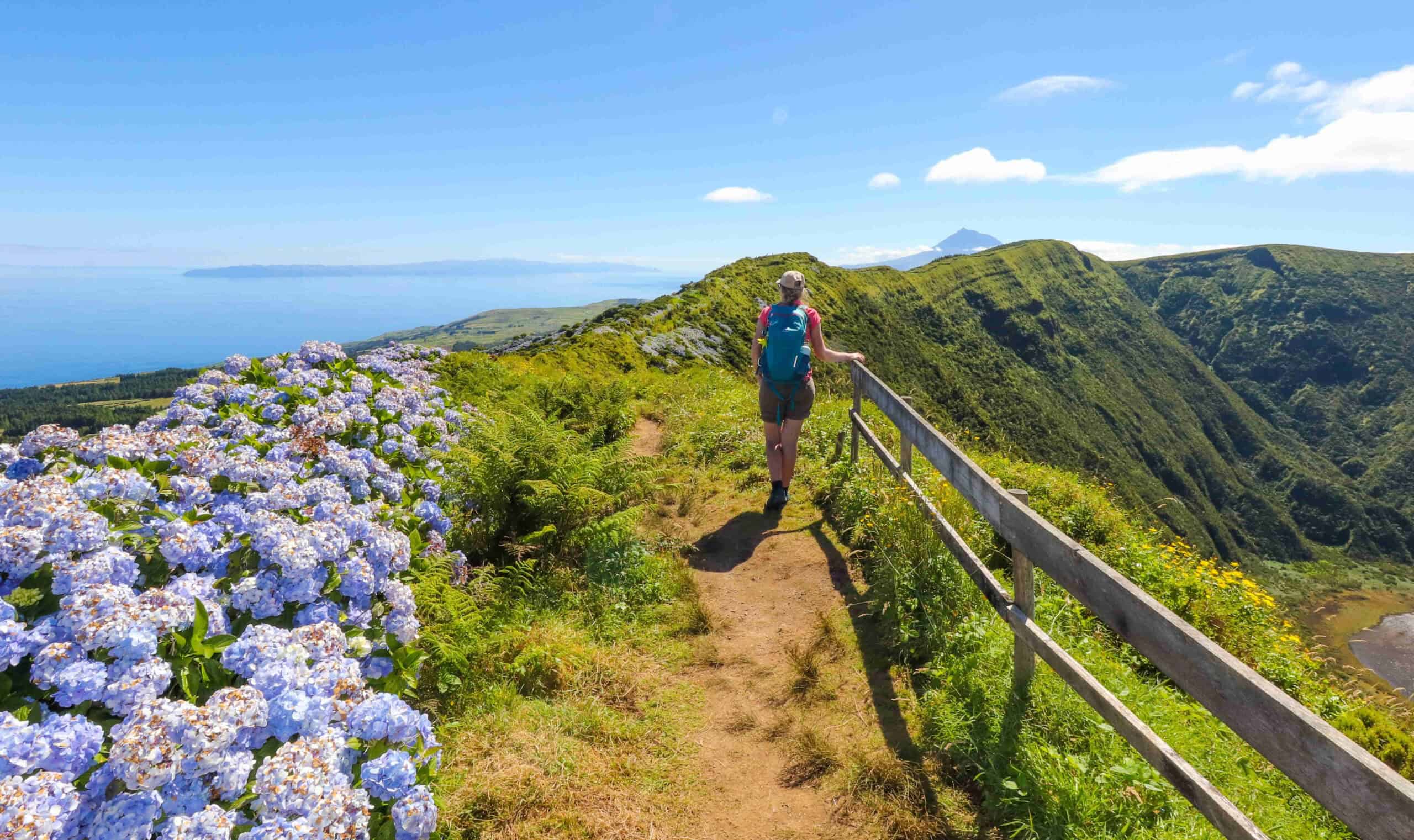
A warm and welcoming Portuguese Island Culture
There’s also an island culture that’s distinct from life on the mainland. Since the first settlers arrived in 15th century, the islands have evolved into a rural community. Locals aim to strike a balance between the taming of a volcanic landscape, whilst embracing sustainable living.
These geologically-fascinating landscapes have often encouraged more intrepid travellers. There are calderas, crater lakes, lava caves and geothermal pools, and it’s just a four hour flight from the UK.
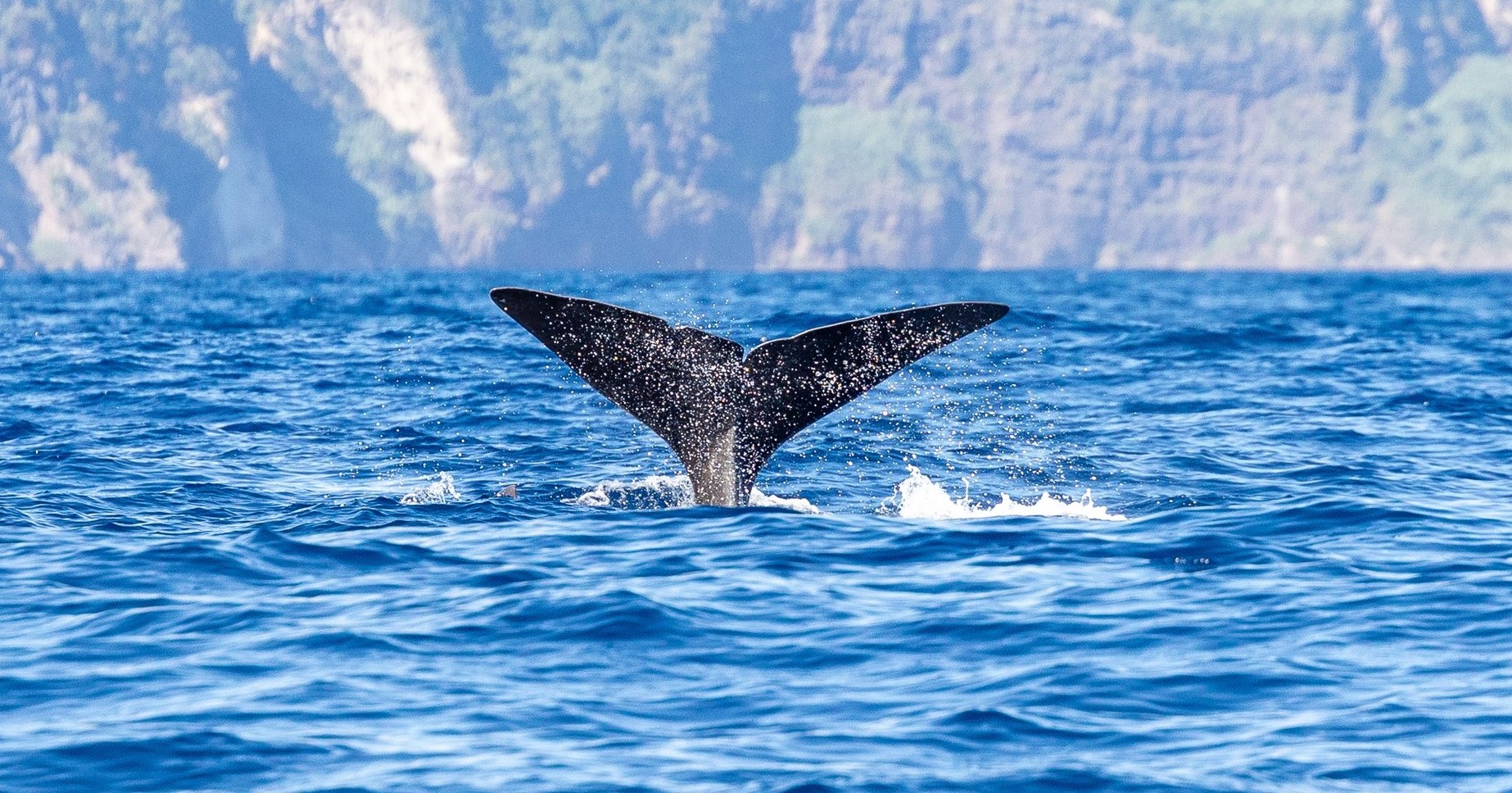
A World Class Whale Watching Destination
And as you’d expect, the Atlantic Ocean has always loomed-large in the Azorean psyche. The islands were a crucial resupply point for trans-Atlantic sailors, for over 400 years. In recent years the Azores have become Europe’s premiere whale and dolphin watching destination.
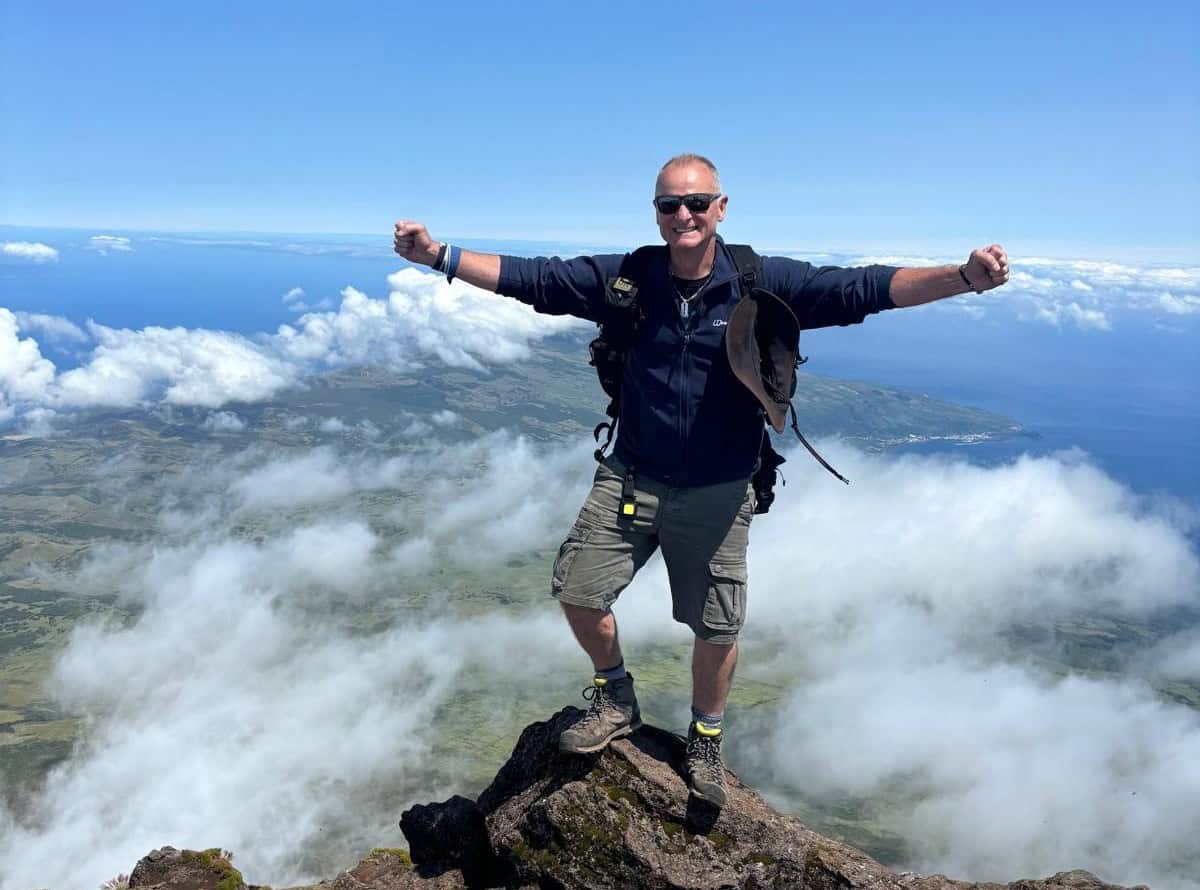
Azores Walking Holidays
A highlight of the Azores is the incredible walks here. You can circuit the rims of calderas and walk around crater lakes. Follow woodland and coastal trails, and trails through thermally active landscapes.
There are many great options across all of the islands, and the trails are waymarked and well mapped. If you like a challenge, you can attempt an ascent of Pico Mountain.
Learn more about the Azores on our dedicated Azores Choice website.
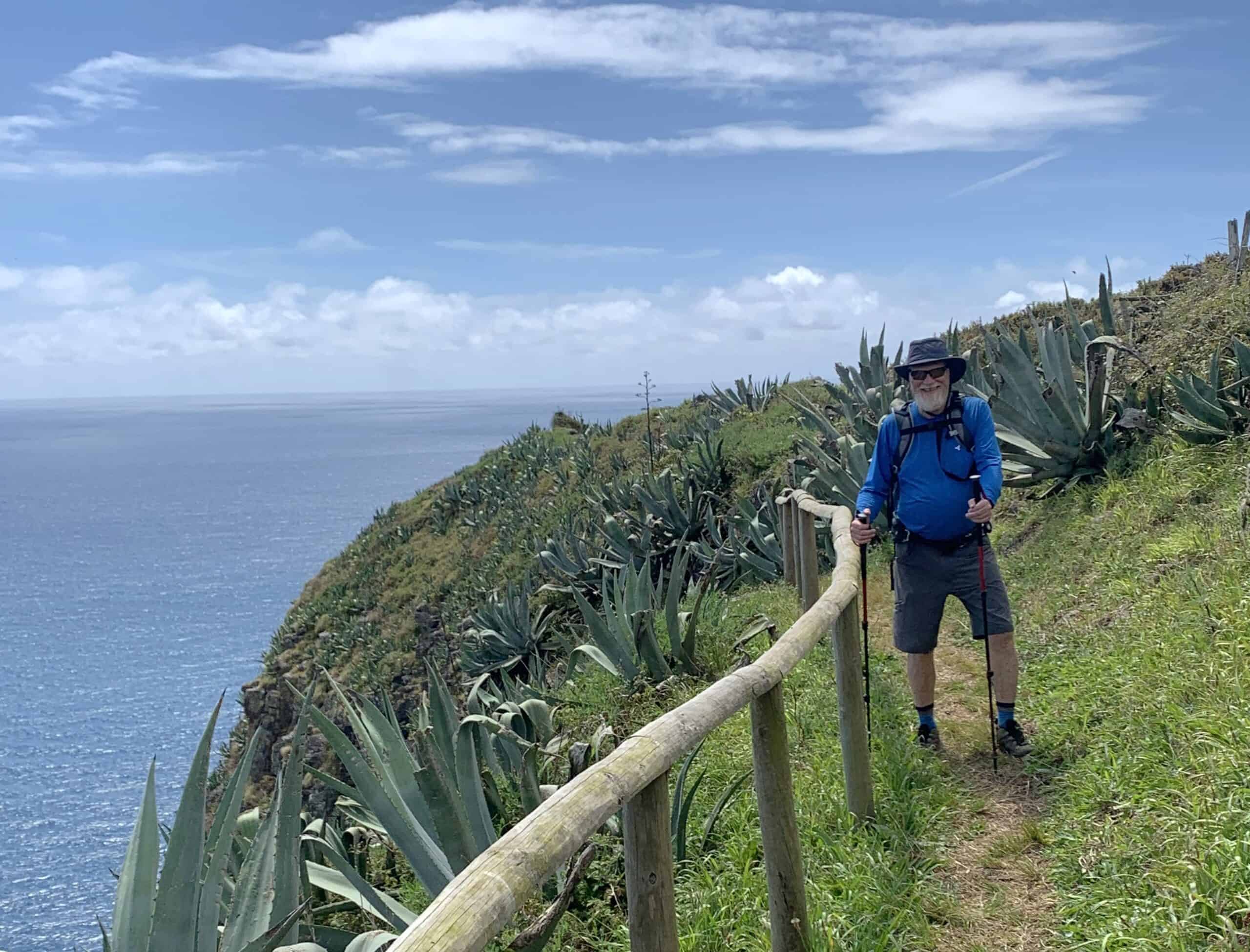
Our holidays have a nice balance of activities and free time. Everything’s flexible and you can personalise your trip.
Whale watching
The Azores are one of the premier whale and dolphin watching destinations in the world, with a wide range of species including resident sperm and pilot whales, migratory blue and fin whales, and bottlenose and spotted dolphins.
Walking
Walking is one of the best ways to explore the Azores, and there are guided and self guided walks to suit everyone's level of fitness.
Canyoning
Canyoning is fast growing in popularity and the Azores have excellent routes on Sao Miguel, Sao Jorge and Flores.
Cycling and mountain biking
Cycle from village to village along the quiet roads or take an adrenaline fuelled guided mountain biking ride down from the crater lakes, the Azores have lots of exciting two wheel options.
Jeep tours
Get off-road with our friendly knowledgeable guides along the dirt tracks of the Azores.
Kayaking and Paddle boarding
Kayak and paddleboard on the breathtaking crater lakes or along the rugged coastline of Sao Miguel and Terceira.
Horse riding
From one hour lessons in an indoor arena to full day rides, riding is one of the best ways to explore the Azorean countryside. You'll be riding beautiful pure and cross bred Lusitano horses and be in the safe hands of our experienced guides.
Surfing
With its year round mild climate and sea temperatures, the Azores is starting to become more popular with surfers. Working with a school on the north coast of Sao Miguel, we can provide lessons with our friendly instructors or just hire the boards and wetsuits and ride the waves on your own.
Diving
As well as offering unique diving experiences for qualified divers, beginners can also learn at the excellent schools on the islands. Dive sites are varied from offshore reefs and volcanic caves to drop-offs, impressive arches and flat seabed. Most dives rarely go deeper than 15m and average sea temperatures are 17-22°C. Visibility is very good at 20-25m.
Birdwatching
With close to 400 species sighted in the archipelago, this is a rewarding yet quiet bird watching destination. For many the highlight is spotting the endemic Azores Bullfinch found only in a small part of the main island of Sao Miguel. There's also the large Cory Shearwater and Roseate Tern colonies, Atlantic canary, several subspecies of the Common Chaffinch, the São Miguel Goldcrest and the Azores Woodpigeon. In October, the Azores become the undisputed rarity hotspot of the Western Palearctic with a wealth of America vagrants on offer from shorebirds and wildfowl to wood-warblers and vireos.
Golf
Golfing in the Azores is a real pleasure. Courses are quiet and spectacular offering views over the ocean and volcanic craters. On São Miguel, Batalha overlooks the sea and is the newest and most challenging course while Furnas (located in the mountains at an altitude of 500m) is sprinkled with lakes and stands of Japanese Cryptomeria and then there's the heavily wooded course on Terceira close the beautiful town of Angra.
In our experience these are the best times of the year to visit The Azores:
Jan
Feb
Mar
Apr
May
Jun
Jul
Aug
Sep
Oct
Nov
Dec
Most of us are familiar with the Azores by name but locating them on a map can be a little trickier.
 These unique islands lie 1500km off the coast of Portugal. Nine wonderfully diverse islands, each with their own merit. They’re very much part of Portugal; in their language, their historic architecture, their wonderful seasonal cuisine and in their warm and friendly welcome.
These unique islands lie 1500km off the coast of Portugal. Nine wonderfully diverse islands, each with their own merit. They’re very much part of Portugal; in their language, their historic architecture, their wonderful seasonal cuisine and in their warm and friendly welcome.

A warm and welcoming Portuguese Island Culture
There’s also an island culture that’s distinct from life on the mainland. Since the first settlers arrived in 15th century, the islands have evolved into a rural community. Locals aim to strike a balance between the taming of a volcanic landscape, whilst embracing sustainable living.
These geologically-fascinating landscapes have often encouraged more intrepid travellers. There are calderas, crater lakes, lava caves and geothermal pools, and it’s just a four hour flight from the UK.

A World Class Whale Watching Destination
And as you’d expect, the Atlantic Ocean has always loomed-large in the Azorean psyche. The islands were a crucial resupply point for trans-Atlantic sailors, for over 400 years. In recent years the Azores have become Europe’s premiere whale and dolphin watching destination.

Azores Walking Holidays
A highlight of the Azores is the incredible walks here. You can circuit the rims of calderas and walk around crater lakes. Follow woodland and coastal trails, and trails through thermally active landscapes.
There are many great options across all of the islands, and the trails are waymarked and well mapped. If you like a challenge, you can attempt an ascent of Pico Mountain.
Learn more about the Azores on our dedicated Azores Choice website.

Our holidays have a nice balance of activities and free time. Everything’s flexible and you can personalise your trip.
Whale watching
The Azores are one of the premier whale and dolphin watching destinations in the world, with a wide range of species including resident sperm and pilot whales, migratory blue and fin whales, and bottlenose and spotted dolphins.
Walking
Walking is one of the best ways to explore the Azores, and there are guided and self guided walks to suit everyone's level of fitness.
Canyoning
Canyoning is fast growing in popularity and the Azores have excellent routes on Sao Miguel, Sao Jorge and Flores.
Cycling and mountain biking
Cycle from village to village along the quiet roads or take an adrenaline fuelled guided mountain biking ride down from the crater lakes, the Azores have lots of exciting two wheel options.
Jeep tours
Get off-road with our friendly knowledgeable guides along the dirt tracks of the Azores.
Kayaking and Paddle boarding
Kayak and paddleboard on the breathtaking crater lakes or along the rugged coastline of Sao Miguel and Terceira.
Horse riding
From one hour lessons in an indoor arena to full day rides, riding is one of the best ways to explore the Azorean countryside. You'll be riding beautiful pure and cross bred Lusitano horses and be in the safe hands of our experienced guides.
Surfing
With its year round mild climate and sea temperatures, the Azores is starting to become more popular with surfers. Working with a school on the north coast of Sao Miguel, we can provide lessons with our friendly instructors or just hire the boards and wetsuits and ride the waves on your own.
Diving
As well as offering unique diving experiences for qualified divers, beginners can also learn at the excellent schools on the islands. Dive sites are varied from offshore reefs and volcanic caves to drop-offs, impressive arches and flat seabed. Most dives rarely go deeper than 15m and average sea temperatures are 17-22°C. Visibility is very good at 20-25m.
Birdwatching
With close to 400 species sighted in the archipelago, this is a rewarding yet quiet bird watching destination. For many the highlight is spotting the endemic Azores Bullfinch found only in a small part of the main island of Sao Miguel. There's also the large Cory Shearwater and Roseate Tern colonies, Atlantic canary, several subspecies of the Common Chaffinch, the São Miguel Goldcrest and the Azores Woodpigeon. In October, the Azores become the undisputed rarity hotspot of the Western Palearctic with a wealth of America vagrants on offer from shorebirds and wildfowl to wood-warblers and vireos.
Golf
Golfing in the Azores is a real pleasure. Courses are quiet and spectacular offering views over the ocean and volcanic craters. On São Miguel, Batalha overlooks the sea and is the newest and most challenging course while Furnas (located in the mountains at an altitude of 500m) is sprinkled with lakes and stands of Japanese Cryptomeria and then there's the heavily wooded course on Terceira close the beautiful town of Angra.
In our experience these are the best times of the year to visit The Azores:
Jan
Feb
Mar
Apr
May
Jun
Jul
Aug
Sep
Oct
Nov
Dec

